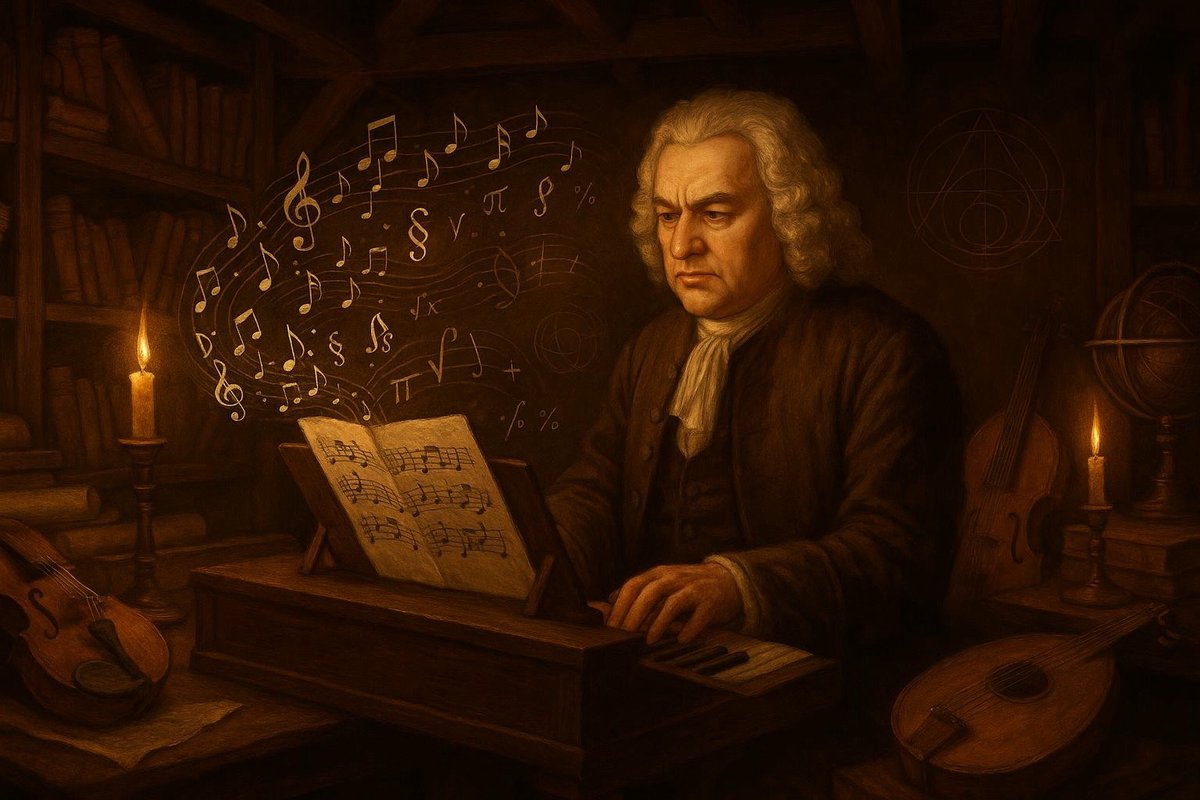
Consider the symphony, a masterpiece of sound and emotion, but beneath the surface lies a hidden structure of numbers. Can mathematics be the unseen hand in music’s creation? Surprisingly, yes! Music and mathematics are intertwined in a dance of rhythm and melody, revealing deeper connections across disciplines we often think of as separate.
Origins: Music and Mathematics Meet
Dating back to ancient Greece, Pythagoras discovered the harmonic series, understanding that musical harmony could be explained with ratios. His revelation that a string halved will produce a perfect octave changed how people perceived music.
- Pythagoras, around 500 BC, is said to have heard music from a blacksmith’s hammer, leading to his discovery.
- He realized the vibrations of strings at simple ratios created consonant sounds.
- The concept of ‘Harmony of the Spheres’ emerged, suggesting celestial bodies produce music based on their movements.
Interestingly, this mathematical approach to sound laid the groundwork for music theory, connecting numbers with emotional resonance. It sparked an understanding that music, like math, is a universal language.
Key Figures: Innovators in Mathematical Music
Fast forward to the 17th century, when figures like Johann Sebastian Bach and later, composers like Arnold Schoenberg, explored the mathematical dimensions of music further.
- Bach, with his intricate fugues, demonstrated patterns and symmetry that mirrored mathematical principles.
- Schoenberg introduced the twelve-tone technique, revolutionizing composition with a strict mathematical method.
- Mathematician Joseph Fourier discovered that complex sounds could be broken into simple sine waves, influencing modern sound synthesis.
No wonder these figures are considered giants. Their work connects the abstract world of math with the emotive power of music, reinforcing the idea that art and science are not so disparate.
Turning Point: When Music and Mathematics Converge
The 20th century saw a convergence, driven by technology and cultural shifts. Computers became tools to analyze and create music, bringing mathematics into modern soundscapes.
- La Monte Young’s exploration of minimalism in the 1960s emphasized repetitive structures akin to mathematical patterns.
- Algorithmic music composition, using mathematical formulas, rose in prominence.
- The development of digital sound processing allowed for precise control over musical elements.
As time goes on, music continues to evolve alongside technology, with mathematics serving as both muse and guide. This blending of disciplines showcases the dynamic nature of human creativity.
Impact on the World: A Harmonious Legacy
The fusion of music and mathematics influences not just composers and musicians but also fields like physics and philosophy, prompting deeper questions about the universe’s structure.
- Music therapy uses rhythm and melody to heal, grounded in mathematical principles of frequency and interval.
- Philosophers explore the concept of ‘musical geometry,’ analyzing space and sound relationships.
- In education, music enhances cognitive skills, fostering mathematical understanding in children.
It’s clear that the mathematical symphonies of music resonate far beyond notes on a page. They echo through the halls of science, art, and human thought, challenging us to see the world in harmonious patterns.
Conclusion: The legacy of mathematics in music lives on, reminding us of the unity between seemingly distinct disciplines. It invites us to listen more deeply, to hear the whispers of numbers in every melody, and to appreciate the beauty of interconnectedness.
Fuel Someone Else’s Curiosity: Share this symphonic journey with others. Let them ponder the numbers behind their favorite tunes and explore the vast ocean of connections between the arts and sciences.

Leave a Reply